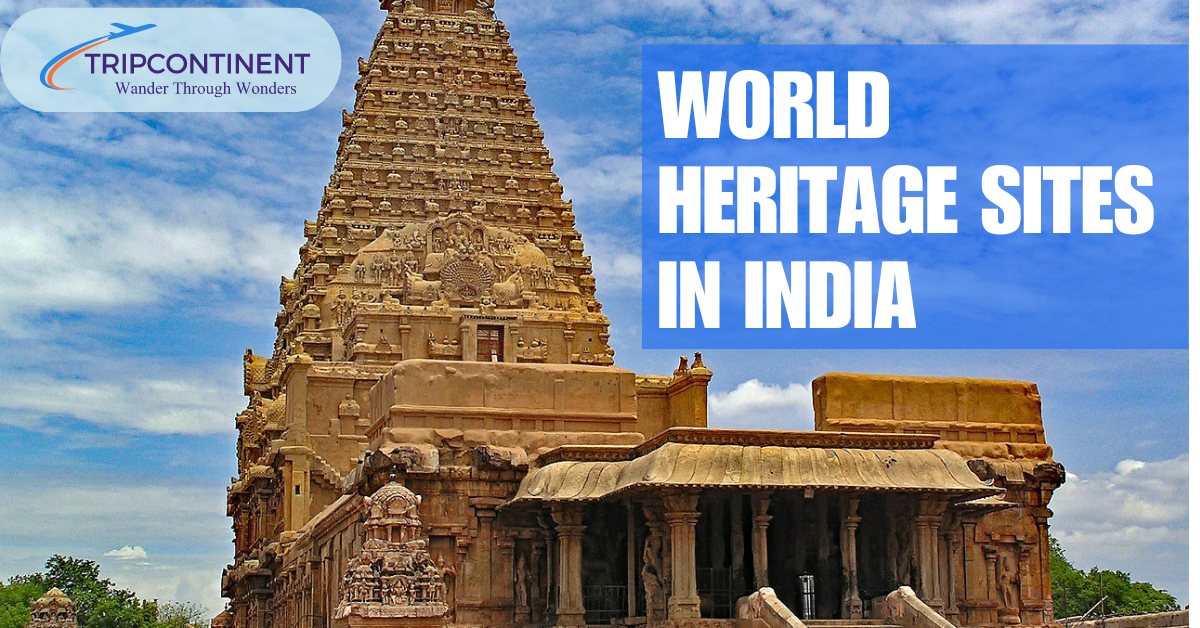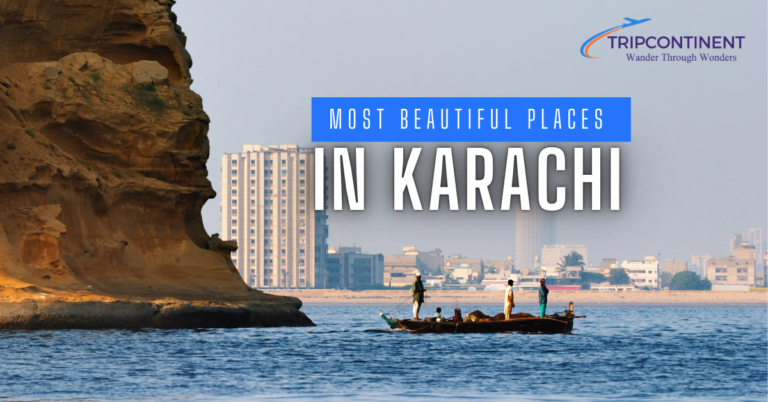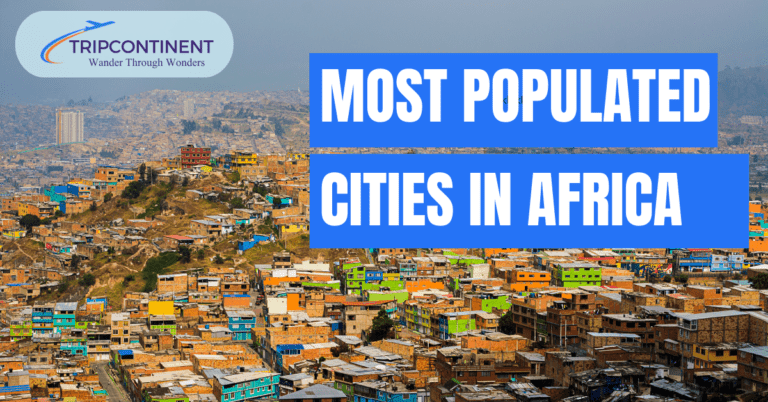World Heritage Sites in India: History, Culture, and Nature
India is a land of rich history, culture, and natural beauty, home to some of the most remarkable landmarks in the world. From ancient temples and grand forts to breathtaking national parks, India’s diverse heritage is recognized globally. UNESCO has designated several places across the country as World Heritage Sites, highlighting their cultural and natural significance. These sites offer a glimpse into India’s past, showcasing architectural wonders, spiritual centers, and natural landscapes that are not only beautiful but also deeply meaningful.
Each site tells its own unique story, preserving the essence of India’s rich legacy for future generations. In this blog, we’ll explore the World Heritage Sites in India. Keep reading!
Different Types of World Heritage Sites in India
The World Heritage Sites in India are divided into 3 categories, they are:
- Natural World Heritage Sites
- Cultural World Heritage Sites
- Mixed World Heritage Sites
Natural World Heritage Sites in India
- Kaziranga National Park
- Keoladeo Ghana National Park
- Manas Wildlife Sanctuary
- Nanda Devi National Park and Valley of Flowers
- Sundarbans National Park
- Western Ghats
- Great Himalayan National Park
1. Kaziranga National Park
Located in Assam, Kaziranga is famous for its one-horned rhinoceroses. Covering an area of 430 sq km, it was declared a UNESCO World Heritage Site in 1985. The park is home to various wildlife species, including elephants, tigers, and swamp deer. Kaziranga also hosts numerous migratory birds, making it a biodiversity hotspot.
2. Keoladeo Ghana National Park
Situated in Rajasthan, Keoladeo Ghana National Park is known for its rich birdlife. Designated a UNESCO site in 1985, it serves as a key wintering area for migratory birds like the Siberian Crane. Covering 29 sq km, the park also has wetlands that support diverse flora and fauna.
3. Manas Wildlife Sanctuary
Located in Assam, this sanctuary is both a Project Tiger Reserve and a UNESCO World Heritage Site (1985). It covers 950 sq km and is home to endangered species like the Assam roofed turtle, pygmy hog, and golden langur. Manas also offers stunning views of the Himalayas.
4. Nanda Devi and Valley of Flowers National Parks
Located in Uttarakhand, these adjoining parks were added to the UNESCO list in 1988. Nanda Devi, India’s second-highest peak, dominates the landscape, while the Valley of Flowers is famous for its alpine meadows filled with rare and colorful flowers. Together, they cover over 630 sq km.
5. Sundarbans National Park
Situated in West Bengal, the Sundarbans National Park is the largest mangrove forest in the world and a UNESCO site since 1987. Spanning 1,330 sq km, it is home to the Bengal tiger, saltwater crocodiles, and numerous bird species. The park is critical for coastal ecosystem conservation.
6. Western Ghats
Stretching across six states, the Western Ghats are among the world’s top biodiversity hotspots. Added to the UNESCO list in 2012, this range spans 160,000 sq km. It is home to thousands of species of plants, animals, and birds, many of which are endemic.
7. Great Himalayan National Park
Located in Himachal Pradesh, this park was declared a UNESCO World Heritage Site in 2014. Covering 905 sq km, it is known for its incredible biodiversity, including rare species like the snow leopard and the Himalayan brown bear. The park also offers spectacular views of the Himalayas.
You might also like: Most Famous Mosques in India
Cultural World Heritage Sites
- Sacred Ensembles of the Hoysalas
- Santiniketan
- Dholavira
- Kakatiya Rudreshwara (Ramappa) Temple
- The Architectural Work of Le Corbusier
- Victorian and Art Deco Ensemble of Mumbai
- Historic City of Ahmedabad
- Jaipur City
- Archaeological Site of Nalanda Mahavihara (Nalanda University)
- Rani-Ki-Van
- Hill Forts of Rajasthan
- The Jantar Mantar
- Red Fort Complex
- Champaner-Pavagadh Archaeological Park
- Chhatrapati Shivaji Terminus
- Rock Shelters of Bhimbetka
- Mahabodhi Temple Complex at Bodh Gaya
- Mountain Railways of India
- Humayun’s Tomb, Delhi
- Qutb Minar and its Monuments, Delhi
- Buddhist Monuments at Sanchi
- Elephanta Caves
- Great Living Chola Temples
- Group of Monuments at Pattadakal
- Churches and Convents of Goa
- Fatehpur Sikri
- Group of Monuments at Hampi
- Khajuraho Group of Monuments
- Group of Monuments at Mahabalipuram
- Sun Temple, Konarak
- Agra Fort
- Ajanta Caves
- Ellora Caves
- Taj Mahal
1. Sacred Ensembles of the Hoysalas
Located in Karnataka, the Sacred Ensembles of the Hoysalas include intricately designed temples from the 12th and 13th centuries. These temples are known for their elaborate sculptures and intricate carvings. The Hoysaleswara Temple is one of the most well-known examples.
2. Santiniketan
Founded by Rabindranath Tagore in West Bengal, Santiniketan is a cultural and educational center that became a UNESCO World Heritage Site in 2023. The institution focuses on blending Indian traditions with global educational ideals, and it remains a hub for the arts, literature, and education.
3. Dholavira
An ancient Harappan city located in Gujarat, Dholavira was added to the UNESCO list in 2021. This archaeological site, dating back over 4,000 years, features a well-planned city structure, including water conservation systems, making it a prime example of ancient urban planning.
4. Kakatiya Rudreshwara (Ramappa) Temple
Located in Telangana, the Ramappa Temple was recognized by UNESCO in 2021. Built during the Kakatiya dynasty in the 13th century, this temple is famous for its intricate sandstone carvings and its floating brick technology.
5. The Architectural Work of Le Corbusier
Located in Chandigarh, this UNESCO site (added in 2016) showcases the unique urban planning and architecture designed by Le Corbusier. His work in Chandigarh has been praised for its modernist approach and its influence on city planning worldwide.
6. Victorian and Art Deco Ensemble of Mumbai
This ensemble of buildings was added to the UNESCO list in 2018. Located along the Mumbai waterfront, it blends Victorian Gothic and Art Deco architecture, reflecting Mumbai’s transition from a colonial city to a modern metropolis.
7. Historic City of Ahmedabad
Ahmedabad became India’s first UNESCO World Heritage City in 2017. Founded in the 15th century, the city is renowned for its rich blend of Hindu, Islamic, and Jain architecture, including landmarks like the Jama Masjid and Bhadra Fort.
8. Jaipur City
Known as the Pink City, Jaipur was declared a UNESCO World Heritage Site in 2019. Founded in 1727 by Maharaja Jai Singh II, Jaipur is famous for its palaces, forts, and vibrant cultural heritage, including iconic structures like the Hawa Mahal and Amber Fort.
9. Archaeological Site of Nalanda Mahavihara (Nalanda University)
Located in Bihar, this ancient university flourished from the 5th to the 12th centuries. Added to the UNESCO list in 2016, Nalanda is one of the world’s oldest learning centers, attracting scholars from across Asia.
10. Rani-Ki-Vav (The Queen’s Stepwell)
Situated in Gujarat, Rani-Ki-Vav is a stepwell built in the 11th century during the reign of the Solanki dynasty. Recognized by UNESCO in 2014, it features intricately carved sculptures and was designed as an inverted temple.
11. Hill Forts of Rajasthan
A collection of six majestic forts, including Chittorgarh and Kumbhalgarh, were added to the UNESCO list in 2013. These forts showcase the Rajput military architecture and played vital roles in Rajasthan’s history.
12. The Jantar Mantar
Located in Jaipur, Jantar Mantar is a collection of astronomical instruments built by Maharaja Jai Singh II in 1734. Recognized by UNESCO in 2010, it is one of the most significant observatories of its time.
13. Red Fort Complex
Located in Delhi, the Red Fort was built by Mughal Emperor Shah Jahan in 1648. Recognized by UNESCO in 2007, it served as the Mughal capital and is a symbol of India’s independence, with the Indian flag raised here annually on Independence Day.
14. Champaner-Pavagadh Archaeological Park
Situated in Gujarat, this site includes ancient fortifications, palaces, and religious buildings. Added to the UNESCO list in 2004, it represents a blend of Hindu and Islamic architecture.
15. Chhatrapati Shivaji Terminus (CST)
A UNESCO site since 2004, this railway station in Mumbai was built in 1887 and blends Victorian Gothic and traditional Indian architecture. It is one of India’s busiest railway stations.
16. Rock Shelters of Bhimbetka
Located in Madhya Pradesh, the Bhimbetka shelters were added to the UNESCO list in 2003. These ancient rock paintings, some over 30,000 years old, depict early human life and animals.
17. Mahabodhi Temple Complex at Bodh Gaya
Situated in Bihar, this site marks the spot where Buddha attained enlightenment. It was added to the UNESCO list in 2002, and the temple remains a major pilgrimage destination for Buddhists worldwide.
18. Mountain Railways of India
This UNESCO site (1999) includes three iconic railways: Darjeeling Himalayan Railway, Nilgiri Mountain Railway, and Kalka-Shimla Railway. These railways showcase 19th-century engineering marvels and traverse scenic mountain routes.
19. Humayun’s Tomb, Delhi
Built in 1570, Humayun’s Tomb is the first garden tomb in India and a precursor to the Taj Mahal. This UNESCO site (1993) is an architectural masterpiece from the Mughal era.
20. Qutb Minar and its Monuments, Delhi
The Qutb Minar complex, a UNESCO site since 1993, includes the world’s tallest brick minaret. Built in the 12th century, the complex also includes several other historic monuments.
21. Buddhist Monuments at Sanchi
Located in Madhya Pradesh, the Sanchi Stupa was built in the 3rd century BCE by Emperor Ashoka. A UNESCO site since 1989, it is one of the oldest stone structures in India and a major Buddhist pilgrimage site.
22. Elephanta Caves
Situated on Elephanta Island near Mumbai, these rock-cut caves date back to the 5th to 7th centuries. Added to the UNESCO list in 1987, they contain intricate carvings of Hindu gods, particularly Lord Shiva.
23. Great Living Chola Temples
Located in Tamil Nadu, these temples were built by the Chola dynasty between the 11th and 12th centuries. Added to the UNESCO list in 1987, they showcase impressive Dravidian architecture.
24. Group of Monuments at Pattadakal
Located in Karnataka, these 7th- and 8th-century temples represent a blend of Dravidian and Nagara architectural styles. This UNESCO site (1987) marks the transition in temple architecture.
25. Churches and Convents of Goa
These churches, built during Portuguese rule in the 16th and 17th centuries, were added to the UNESCO list in 1986. The most famous among them is the Basilica of Bom Jesus, housing the remains of St. Francis Xavier.
Also read: Largest Banks in India
26. Fatehpur Sikri
Built by Emperor Akbar in the late 16th century, Fatehpur Sikri served as the Mughal capital for a brief period. A UNESCO site since 1986, it features a blend of Islamic, Hindu, and Jain architecture.
27. Group of Monuments at Hampi
Located in Karnataka, Hampi was the capital of the Vijayanagara Empire in the 14th century. Declared a UNESCO site in 1986, it contains impressive temples, palaces, and marketplaces.
28. Khajuraho Group of Monuments
Famous for its intricately carved erotic sculptures, the Khajuraho temples in Madhya Pradesh were built between 950 and 1050 CE. Recognized by UNESCO in 1986, they showcase remarkable craftsmanship.
29. Group of Monuments at Mahabalipuram
These rock-cut temples and sculptures in Tamil Nadu date back to the 7th century. A UNESCO site since 1984, Mahabalipuram is known for its artistic stone carvings and stunning seashore location.
30. Sun Temple, Konarak
Located in Odisha, the 13th-century Sun Temple is shaped like a giant chariot. Recognized by UNESCO in 1984, it is one of India’s most iconic architectural wonders.
31. Agra Fort
Situated near the Taj Mahal, Agra Fort was built by Emperor Akbar in the 16th century. Added to the UNESCO list in 1983, it served as the main residence of Mughal emperors for decades.
32. Ajanta Caves
Located in Maharashtra, the Ajanta Caves date back to the 2nd century BCE and are famous for their intricate Buddhist paintings and sculptures. A UNESCO site since 1983, these caves are among the finest examples of ancient Indian art.
33. Ellora Caves
Also located in Maharashtra, Ellora is a complex of 34 rock-cut temples and monasteries dating from the 6th to 10th centuries. Recognized by UNESCO in 1983, Ellora features Hindu, Buddhist, and Jain monuments.
34. Taj Mahal
Completed in 1648, the Taj Mahal in Agra is one of the most famous monuments in the world. A UNESCO site since 1983, this white marble mausoleum was built by Mughal Emperor Shah Jahan in memory of his wife Mumtaz Mahal.
Mixed World Heritage Sites in India
- Khangchendzonga National Park
1. Khangchendzonga National Park
Designated as a Mixed World Heritage Site by UNESCO in 2016, Khangchendzonga National Park, located in the state of Sikkim, India, is recognized for its natural beauty and cultural significance. The park spans over 1,784 sq km and is home to Mount Khangchendzonga, the third-highest peak in the world. It features glaciers, valleys, lakes, and diverse ecosystems.
Also see: Richest Cities in India
Conclusion
These remarkable World Heritage Sites in India, not only attract visitors from around the world but also serve as a reminder of India’s deep-rooted heritage. From majestic temples and ancient cities to pristine national parks, each site reflects a piece of the country’s soul. Preserving and celebrating these sites helps keep the stories of the past alive, ensuring they continue to inspire and educate future generations about the wonders of India’s legacy.
FAQs
What Is a World Heritage Site?
A World Heritage Site is a landmark or area recognized by the United Nations Educational, Scientific and Cultural Organization (UNESCO) for its outstanding cultural, historical, scientific, or other forms of significance. These sites are selected based on criteria that demonstrate their universal value to humanity.
What Is the Rank of India in World Heritage Sites?
India ranks 6th in the world for the number of UNESCO World Heritage Sites. India has 42 World Heritage Sites — 34 cultural, 7 natural, and 1 mixed. This impressive collection highlights India’s rich cultural heritage and diverse natural beauty, making it one of the top countries with the most UNESCO-recognized sites globally.
Which Country Has the Highest World Heritage Sites?
Italy holds the record for the highest number of UNESCO World Heritage Sites, with 58 sites recognized. This includes a rich mix of cultural and natural landmarks, reflecting Italy’s profound historical, artistic, and architectural heritage. China follows closely with 57 World Heritage Sites, showcasing its vast and diverse cultural and natural landscapes.
How Many World Heritage Sites Are There in Pakistan?
Pakistan has 6 UNESCO World Heritage Sites. These include:
- Mohenjo-Daro
- Taxila
- The Rohtas Fort
- The Buddhist Ruins of Takht-i-Bahi and Neighboring City Remains
- The Lahore Fort and Shalimar Gardens
- The Makli Necropolis
How Many World Heritage Sites Are There in the World?
As of 2024, there are a total of 1,223 World Heritage Sites located across 168 countries, of which 952 are cultural, 231 are natural, and 40 are mixed properties.

I’m Sophia Jones, an adventurer at heart from New York City, USA. I live for travel and exploration, always eager to discover new places, meet fascinating people, and try out diverse cuisines. Over the past few years, I’ve traveled to numerous countries, immersing myself in different cultures and creating unforgettable memories.






